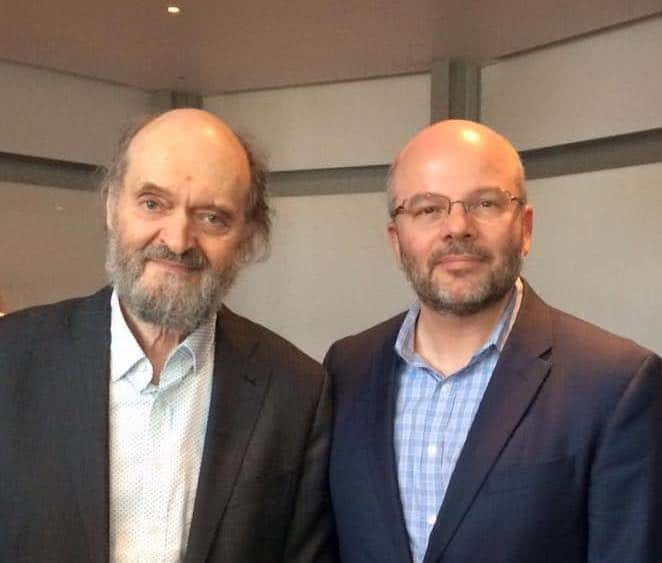
Videmus nunc per speculum in ænigmate: tunc autem facie ad faciem. Nunc cognosco ex parte: tunc autem cognoscam sicut et cognitus sum. I Cor. XIII.xii
I was in college in 1988. At some point that year I made one of my reasonably frequent visits to the Tower Records near the Space Needle in Seattle. In the Classical Room (remember those!?) there was some amazing music playing, and I stood in silence not really knowing what I was hearing, but intuitively knowing that it was music that I wanted to know more. It was the Passio by Arvo Pärt.
I instantly bought the CD, among the first CDs I ever purchased, from Rob Weltzien, one of the most knowledgeable persons on the planet when it comes to classical recordings. We’re still friends, and he’s still in Seattle and a subscriber to Cappella Romana.
Opening the simple grey package with the words PASSIO printed in blood red and putting the silver disc in the player, I discovered that Pärt’s Passio was presented as a single track of 71 minutes and 40 seconds, which in those days was about as much as you could fit on a single CD. Manfred Eicher at ECM and Arvo himself clearly wanted the listener to experience this piece as its composite whole, and not in sections. I listened and followed the Latin text as it unfolded. When Jesus sings “Consumatum est” I unexpectedly wept.
Cappella Romana Performs Arvo Pärt September 29-October 1
Odes of Repentance
Seattle
Friday 29 SEPTEMBER 2023, 7:30 P.M.
St. James Cathedral
Portland
Saturday 30 SEPTEMBER 2023, 8:00 P.M.
St. Mary’s Cathedral
Portland
SUNDAY 1 OCTOBER 2023, 3:00 P.M.
MADELEINE PARISH
Grigorjeva & Pärt
What is so compelling about Pärt’s music? There is so little on the page, seemingly just a few notes and lots of white space and silence. Arvo along with his wife Nora named the technique “tintinnabulation,” which means the sounding of little bells, and is based on a very simple concept of triads sung against melodic formulas, which are more often than not driven by either word structures or mathematical processes. Of the latter, the piece Spiegel im Spiegel (“Mirror in the Mirror”) holds a special place for me.
Spiegel im Spiegel was Pärt’s last work to be completed before emigrating from Estonia to Vienna, later to Berlin. If there is a work that places Pärt’s output in the context of classic minimalism, this is it. The whole piece is a spinning out of an additive melodic process (not dissimilar to those employed by Reich or Glass), but it is far from an academic exercise in dry mathematical patterns.
In non-representational art especially, it is what the viewer brings to it that is amplified, refracted, and focussed by the art. In the case of Spiegel im Spiegel, and I am convinced in all of Pärt’s music, the process of the music unfolding somehow prompts listener to reflect – as in a mirror – on his or her innermost thoughts, desires, and even pain, resulting in an ineffable spiritual, emotional, and even cathartic experience, granting the listener through that mirror a glimpse of transcendence.
—Mark Powell

You must be logged in to post a comment.